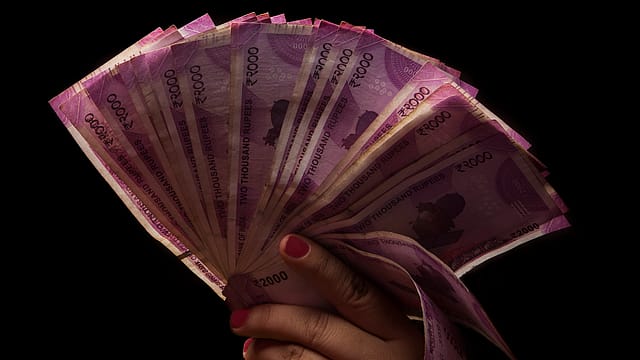Govt on track to meet FY23 fiscal deficit target of 6.4%: India Ratings
ADVERTISEMENT

The union government would be able to meet the fiscal deficit target set forth in the Budget 2022-23, despite burgeoning expenditure, on the back of higher tax collections driven by higher-than-budgeted nominal GDP growth in FY23, according to India Ratings and Research.
The government's finances during April-November 2022 appear to be in a much better position than that during the corresponding period last fiscal, aided by the encouraging and resilient recovery, the ratings agency says.
The gross tax revenue grew at a robust pace of 15.5% year-on-year during April-November 2022, much higher than the budgeted growth of 9.6%, it says.
Ind-Ra estimates that the gross tax collections for FY23 would grow 14.7% year-on-year to ₹31.06 lakh crore, higher than the budgeted ₹27.62 lakh crore, on account of the substantial improvement in direct taxes collections.
While the direct tax collections are pegged to grow 20.7% year-on-year due to the steep growth in corporate (18%) and income taxes (23.5%), the indirect taxes are projected to increase 8.4%, says Ind-Ra. As a result, the share of direct taxes in the gross tax revenue collections is projected to increase to a four-year high of 53.8% in FY23.
December 2025
The annual Fortune 500 India list, the definitive compendium of corporate performance, is out. This year, the cumulative revenue of the Fortune 500 India companies has breached $2 trillion for the first time. Plus, find out which are the Best B-schools in India.
"The non-tax revenues are expected to come in higher at ₹3.05 lakh crore than the budgeted ₹2.70 lakh crore in FY23. However, they would be 12.5% lower than FY22's. The non-tax revenues were ₹1.98 lakh crore in the first eight months of FY23, down 11.1% year-over-year and 73.6% of the budgeted amount," the ratings firm says.
Ind-Ra expects expenditures to be higher than those budgeted for FY23. As per the first supplementary demand for grants placed by the union government, the revenue expenditure would inflate by ₹2.95 lakh crore on account of ballooning of the subsidy bill. Major subsidies (food, fertilisers and petroleum) would increase by ₹1.97 lakh crore in FY23. The extension of the Pradhan Mantri Gareeb Kalyan Ann Yojana until end-December 2022 and the steep rise in world prices of fertilisers have led to an increase in food and fertiliser subsidies.
The Union Cabinet recently announced that the food grains which were provided at subsidised rates to 813.5 million beneficiaries under the National Food Security Act, would be provided for free by the union government from 1 January 2023 to 31 December 2023. The agency estimates this measure to add a burden of ₹13,800 crore (0.05% of GDP) to the national exchequer.
Ind-Ra says that the current expenditure of the union government would be at ₹35.43 lakh crore, higher than the proposed current expenditure of ₹34.89 lakh crore in FY23. However, the agency expects the capital expenditure at ₹7.73 lakh crore to be lower than the proposed capital expenditure of ₹7.81 lakh crore in the same period.
Ind-Ra forecasts the revenue and fiscal deficit to come in at ₹10.58 lakh crore and ₹17.61 lakh crore in FY23 which would be higher than the budgeted ₹9.9 lakh crore and ₹16.61 lakh crore, respectively, in FY23. However, the higher-than-budgeted nominal GDP, which is expected to grow 15.4% year-on-year, would help in meeting the budgeted target for revenue and fiscal deficit at 3.8% and 6.4% of GDP, respectively, in FY23.
